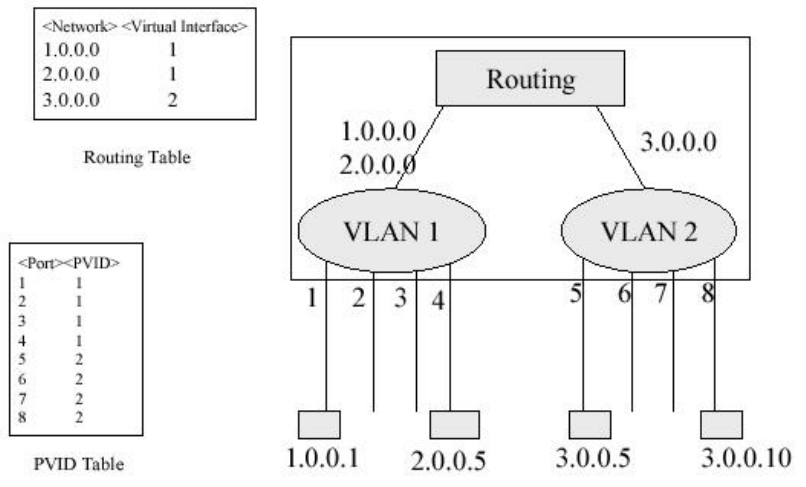
186
4.4.Multicast Filtering
Multicasting sends data to a group of nodes instead of a single destination. The simplest
way to implement multicasting is to broadcast data to all nodes on the network.
However, such an approach wastes a great deal of bandwidth if the target group is small
compared to the overall broadcast domain.
Because applications such as videoconferencing and data sharing are now widely used,
efficient multicasting has become vital. A common approach is to use a group
registration protocol that allows nodes to join or leave multicast groups. A switch or
router can then easily determine which ports contain group members and send data out
to those ports only. This procedure is called multicast filtering.
The purpose of IP multicast filtering is to optimize a switched network’s performance, so
multicast packets will only be forwarded to those ports containing multicast group hosts
or multicast routers / switches, instead of flooding traffic to all ports in the subnet
(VLAN).
The routing switch supports IP multicast filtering not only by passively monitoring IGMP
Query and Report messages and DVMRP Probe messages to register end-stations as
multicast group members (Layer 2), but also by actively sending GMRP Query
messages to learn the location of multicast routers / switches and member hosts in
multicast groups within each VLAN (Layer 3). This switch also supports the DVMRP
multicast routing protocol required to forward multicast traffic to other subnets.
4.4.1.IGMP Snooping
A Layer 2 switch can passively snoop on IGMP Query and Report packets transferred


















